Stress Birefringence Experiment

Some physical processes can be used to produce the polarized light such as absorption, refraction, reflection, diffraction and birefringence.
Birefringence is the optical property of a material that has a dependent refractive index to polarization and propagation direction of light. These optically anisotropic materials are said to be birefringent.
In general, birefringence is the double refraction of light. Each incoming light through the birefringent material such as calcite crystal is split by polarization into two rays; an ordinary and an extraordinary ray. These rays have different paths and polarizations.
Common birefringent materials are;
* best characterized birefringent materials are crystals
* many plastics under mechanical stress such as cellophane or plastic boxes
* many biological materials such as collagen, found in cartilage, tendon, bone, corneas, and several other areas in the body or some proteins.
Polarized light microscopy is commonly used in biological tissue.
Birefringence is used in many optical and medical devices. In medical applications, it can be used for the measurement of the optical nerve thickness or the diagnosis of glaucoma.
Well then, what is the connection with polarization?
Let's think. You ordered a new T-shirt from Amazon. You tried it and liked it. How beautiful! But wait. You can use a plastic cargo package for a polarization experiment and demonstrate the stress birefringence of a plastic sheet easily. Yesss, you can make science using 'garbage' too.
Let's look at that more closely!
Polarizers are frequently used to detect stress in plastics; birefringence. In this experiment, we use basic materials from our daily life as samples and see birefringence with our naked eyes. Let's collect simple objects such as plastic boxes, plastic cutlery (Image 1) or plastic packages. Even we can prepare our own birefringent object (Image 2) using a plastic punched pocket and sticky tape.
Image 1 :
Image 2:
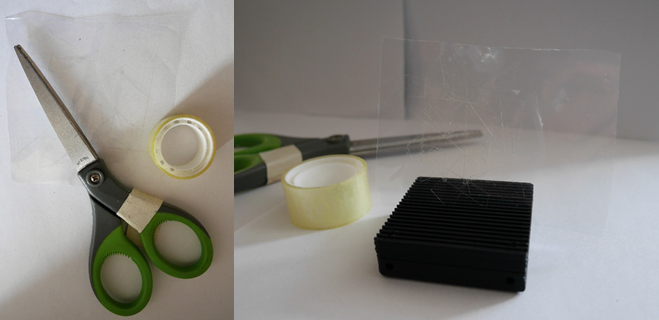
Stress Birefringence
Stress birefringence results with stressed or deformation of isotropic materials and applying stressed causes a loss of physical isotropy and generates birefringence.
How can stress be applied? Externally or as another method can be used. A birefringent plastic object is manufactured using injection molding and is cooled.
 Parts
Parts
Modules for this setup
| Name | Properties | Price | Link | # |
|---|---|---|---|---|
| 4×1 Baseplate | Skeleton of the System | 5.47 € | Base-plate | 1 |
| MODULE: Polarizer Cube | It holds the linearly polarizing filter | 8.62 € | Linear Polarizer | 2 |
| MODULE: Sample Holder Cube | It holds the Birefringent Samples | 3.47 € | Sample Holder | 1 |
| EXTRA MODULE: Screen Holder Cube | It holds the Display Screen (Not Used in Practice) | 1 € | Screen | 1 |
| EXTRA MODULE: Flashlight Lamp Cube | Light Source | 7.2 € | Flashlight | 1 |
 Parts to print
Parts to print
- 1 × Base-plate 4×1
- 3 × Cube base 1×1
- 3 x Cube lid 1×1
- 2 × Polarizer Guide
- 2 × Polarizer Wheel
- 2 × Polarizer Lid
- 1 × Sample Holder
- 1 x Sample Holder Clamp
Extra Holder Parts but NOT USED in our experiment: - 1 x Sample Holder - comb for Screen
- 1 × Flashlight Holder

 Additional components
Additional components
- Check out the RESOURCES for more information!
- 1 × Linear Polarizing Sheet 🢂
- 16 × 5 mm Ball magnets 🢂
- 24 x Screws DIN912 ISO 4762 - M3×12 mm 🢂
- 6 x Screws DIN912 ISO 4762 M2×16 mm 🢂
- Birefringent Materials or Samples
- NOT USED 1 × flashlight 🢂
 Assembly
Assembly
- Baseplate
- Linear Polarizer Cube
- Sample Holder Cube
- EXTRA MODULES: Sample Holder for Screen
- EXTRA MODULES: Flashlight cube
If all written modules are used in the experiment, the setup will look like:

 Results
Results
You will find the basic version of the Stress Birefringence experiment without an extra light source and sample holder below.
A sample is placed into the Crossed Polarizers in the setup, and color patterns can be observed clearly. The polarization of a light ray is rotated after passing through a birefringent material and the amount of rotation is dependent on wavelength.
The printed cube parts were assembled and the result images of experiences were taken for 3 different birefringent materials.
In the 1st Experiment, we prepared our sample using a plastic punched pocket and randomly applied sticky tape on it.
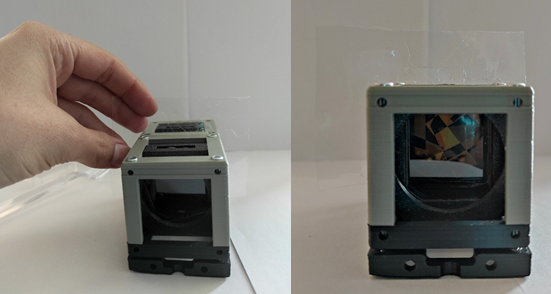

In the 2nd Experiment, we used a plastic piece as a sample for the setup.
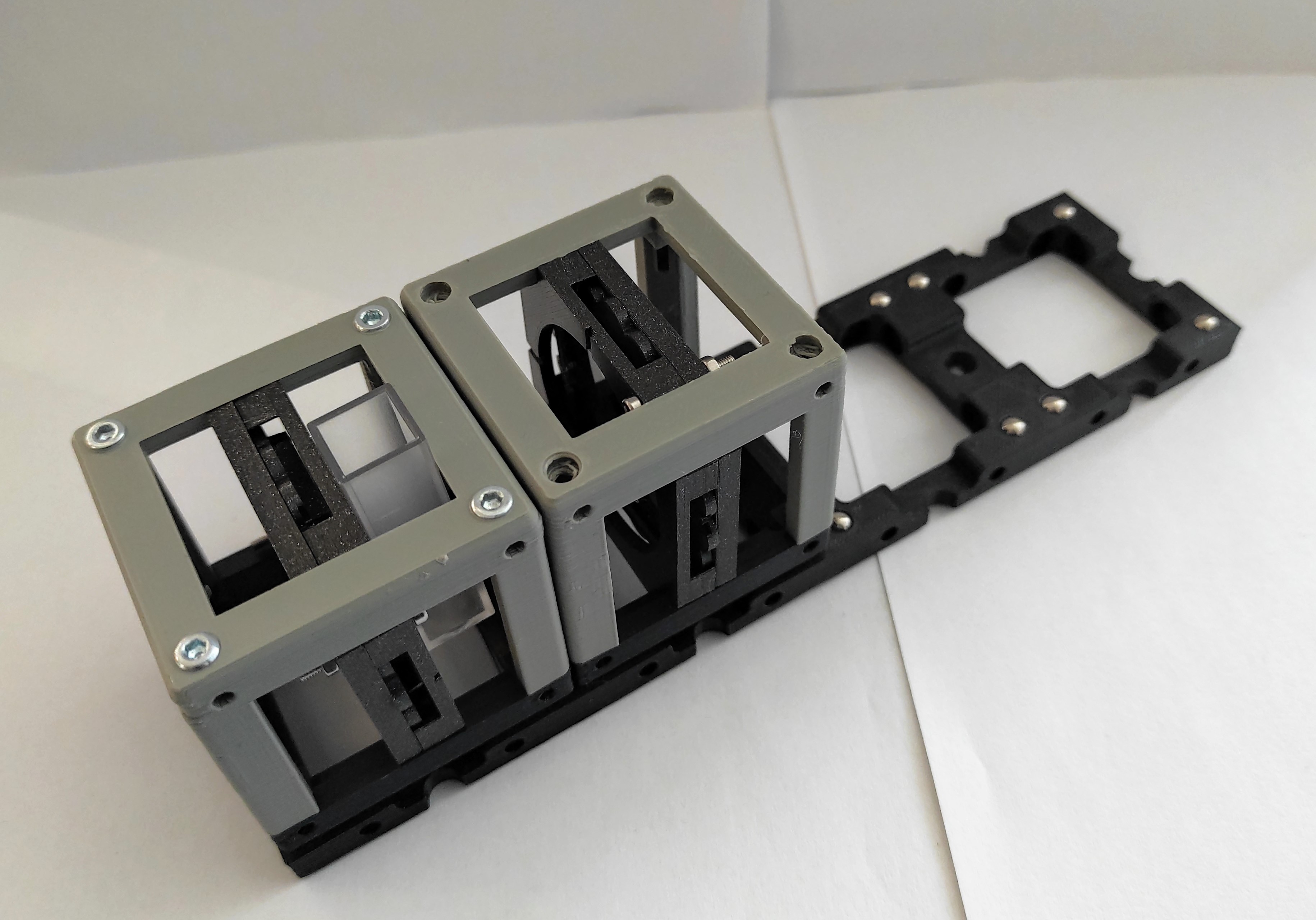
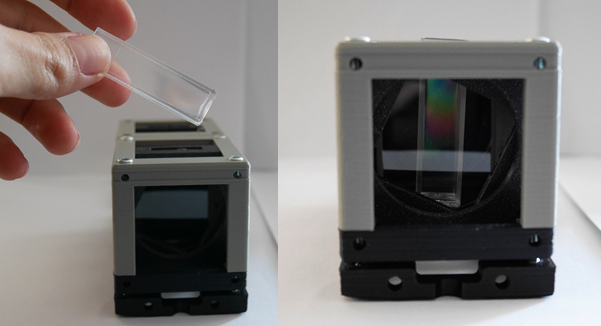
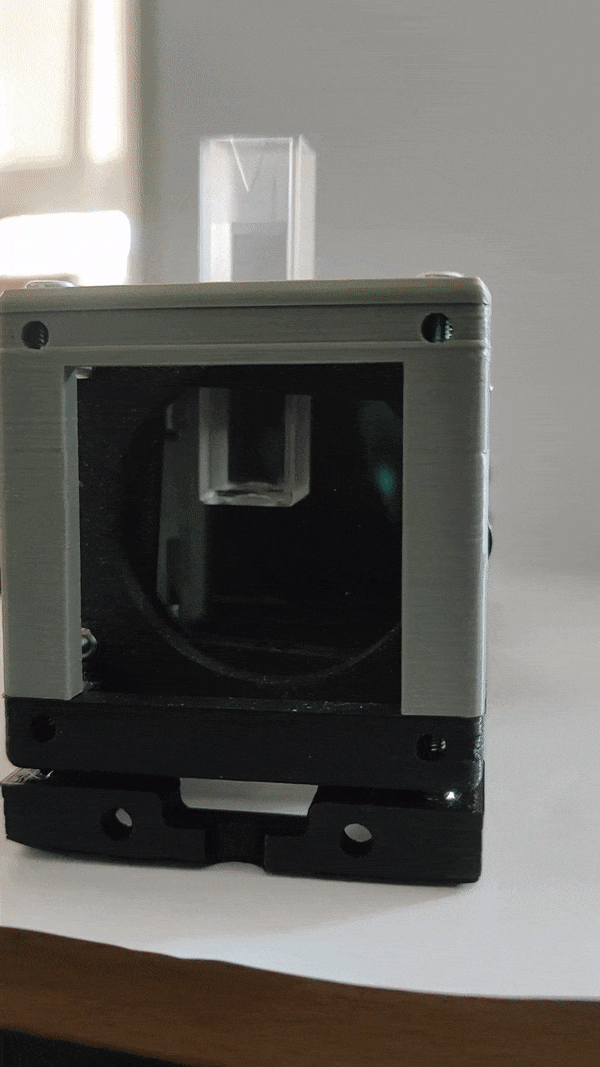
In the 3rd Experiment, plastic cutlery was used.
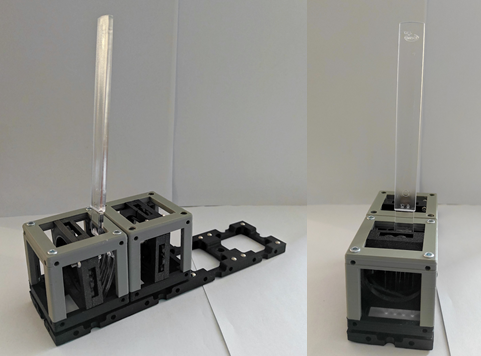
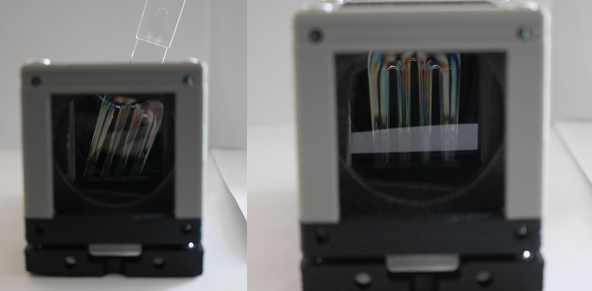
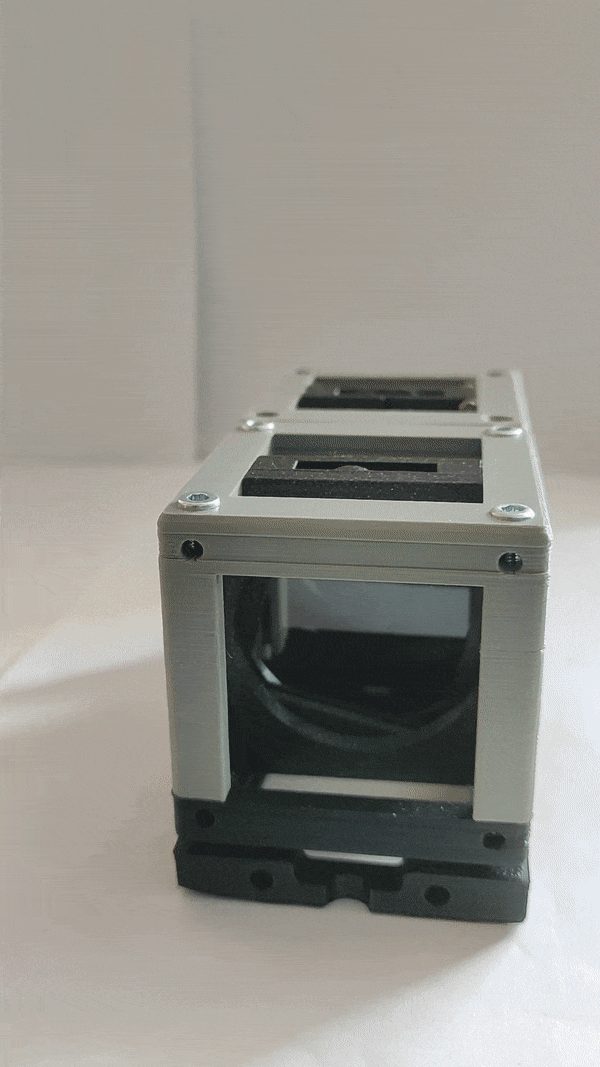
New Ideas
Rat-Tat! We are here to hear new ideas. Please don't shy and have a heart-to-heart talk with us. 💝